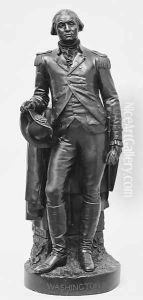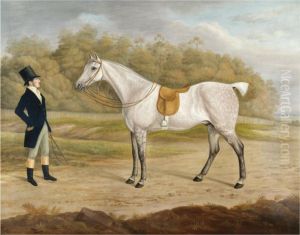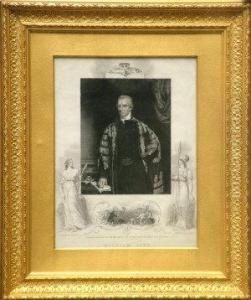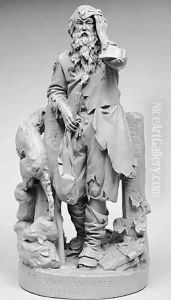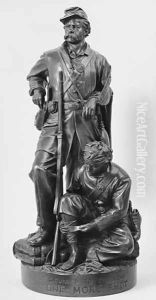John Rogers Paintings
John Rogers, born in 1829 in Salem, Massachusetts, was an American sculptor renowned for his unique genre of sculptures known as 'Rogers Groups'. These were small-scale, mass-produced figurines made of plaster, portraying scenes of everyday life in the 19th century. Rogers' work captured the essence of American society during his time, making art accessible to the middle class and not just the elite. His sculptures often depicted scenes from literature, history, and daily life, including the Civil War, which had a profound impact on American society.
Rogers began his artistic career with an interest in engineering and worked as a draftsman and a machinist before turning to sculpture. His engineering background influenced his approach to sculpture, focusing on mass production methods that allowed his works to be sold at prices affordable to a broad audience. In 1859, he produced his first significant piece, 'The Slave Auction', which reflected the heated debate over slavery in the United States.
Throughout his career, Rogers sold tens of thousands of these groups. His studio in New York became a significant attraction, drawing visitors eager to see where the famous Rogers Groups were made. Despite the popularity of his works, Rogers insisted on maintaining a high level of quality and detail in each piece, contributing to his lasting reputation.
John Rogers' influence extended beyond his immediate success in the art market. He played a crucial role in democratizing art in America, proving that it could be both accessible and profitable to produce art for the middle class. His death in 1904 marked the end of a prolific career, but his legacy lived on, with many of his works preserved in museums and private collections across the country. Rogers' contributions to American art and culture remain a subject of study and appreciation among art historians and enthusiasts alike.
